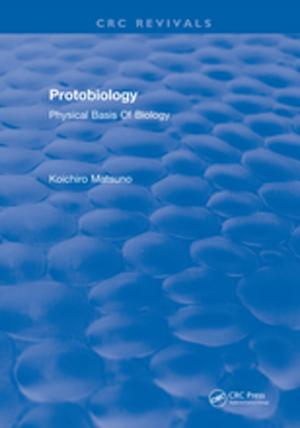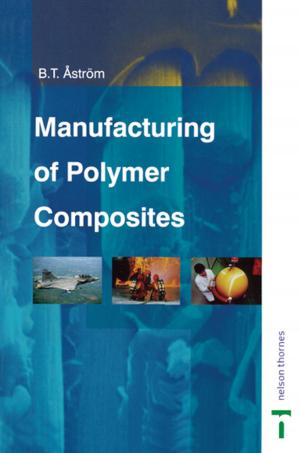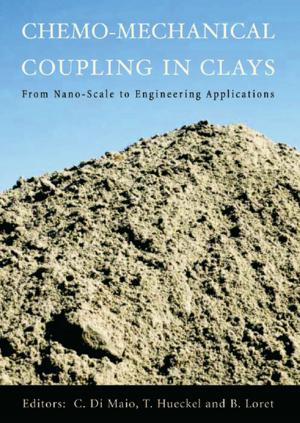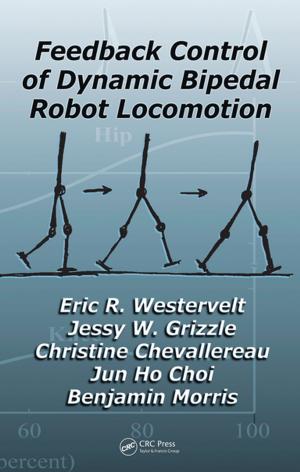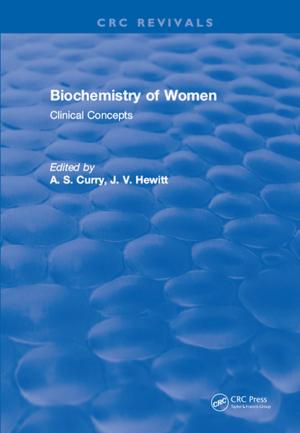Invasive Stink Bugs and Related Species (Pentatomoidea)
Biology, Higher Systematics, Semiochemistry, and Management
Nonfiction, Science & Nature, Science, Biological Sciences, Entomology, Nature, Environment, Ecology, Technology, Agriculture & Animal Husbandry| Author: | ISBN: | 9781315354040 | |
| Publisher: | CRC Press | Publication: | January 17, 2018 |
| Imprint: | CRC Press | Language: | English |
| Author: | |
| ISBN: | 9781315354040 |
| Publisher: | CRC Press |
| Publication: | January 17, 2018 |
| Imprint: | CRC Press |
| Language: | English |
Key features:
Presents a brief history of past classifications, a summary of present classification, and speculation on how the classification may evolve in the future
Includes keys for the identification of families and subfamilies of the Pentatomoidea and for the tribes in the Pentatomidae
Explains transmission of plant pathogens and concepts of pathology and heteropteran feeding for the non-specialist
Provides an extensive literature review of transmission by stink bugs of viral, bacterial, fungal, and protozoan organisms that cause diseases of plants
Discusses the diversity of microbial symbionts in the Pentatomidae and related species, showing how microorganisms underpin the evolution of this insect group
Reviews semiochemicals (pheromones, kairomones, allomones) of the Pentatomoidea and their vital role in the life histories of pest and beneficial species and their exploitation by natural enemies of true bugs
Covers past, current, and future control options for insects, with a focus on stink bugs and related heteropterans
The Superfamily Pentatomoidea (stink bugs and their relatives) is comprised of 18 families with over 8,000 species, the largest of which is the family Pentatomidae (about 5,000 species). These species primarily are phytophagous, and many cause tremendous economic damage to crops worldwide.
Within this superfamily are six invasive species, two that occur worldwide and four that are recent invaders in North America. Once established in new geographic regions, these species have increased their numbers and geographic distributions dramatically, causing economic damage totaling billions of dollars. Invasive Stink Bugs and Related Species (Pentatomoidea): Biology, Higher Systematics, Semiochemistry, and Management is the first book that presents comprehensive coverage of the biology of invasive pentatomoids and related true bug species and addresses issues of rapidly growing economic and environmental concerns.
Containing the contributions of more than 60 stink bug specialists from 15 countries, this book provides a better understanding of the biology and economic importance of these invasive species, why they became invasive, and how their continued geographical expansion is likely to affect numerous agricultural systems and natural environments. Including over 3,500 references, this authoritative work serves as an access point to the primary literature on their life histories, higher systematics, diapause and seasonal cycles, pathogens, symbionts, semiochemistry, and pest management control strategies for pentatomoid bugs.
Key features:
Presents a brief history of past classifications, a summary of present classification, and speculation on how the classification may evolve in the future
Includes keys for the identification of families and subfamilies of the Pentatomoidea and for the tribes in the Pentatomidae
Explains transmission of plant pathogens and concepts of pathology and heteropteran feeding for the non-specialist
Provides an extensive literature review of transmission by stink bugs of viral, bacterial, fungal, and protozoan organisms that cause diseases of plants
Discusses the diversity of microbial symbionts in the Pentatomidae and related species, showing how microorganisms underpin the evolution of this insect group
Reviews semiochemicals (pheromones, kairomones, allomones) of the Pentatomoidea and their vital role in the life histories of pest and beneficial species and their exploitation by natural enemies of true bugs
Covers past, current, and future control options for insects, with a focus on stink bugs and related heteropterans
The Superfamily Pentatomoidea (stink bugs and their relatives) is comprised of 18 families with over 8,000 species, the largest of which is the family Pentatomidae (about 5,000 species). These species primarily are phytophagous, and many cause tremendous economic damage to crops worldwide.
Within this superfamily are six invasive species, two that occur worldwide and four that are recent invaders in North America. Once established in new geographic regions, these species have increased their numbers and geographic distributions dramatically, causing economic damage totaling billions of dollars. Invasive Stink Bugs and Related Species (Pentatomoidea): Biology, Higher Systematics, Semiochemistry, and Management is the first book that presents comprehensive coverage of the biology of invasive pentatomoids and related true bug species and addresses issues of rapidly growing economic and environmental concerns.
Containing the contributions of more than 60 stink bug specialists from 15 countries, this book provides a better understanding of the biology and economic importance of these invasive species, why they became invasive, and how their continued geographical expansion is likely to affect numerous agricultural systems and natural environments. Including over 3,500 references, this authoritative work serves as an access point to the primary literature on their life histories, higher systematics, diapause and seasonal cycles, pathogens, symbionts, semiochemistry, and pest management control strategies for pentatomoid bugs.



